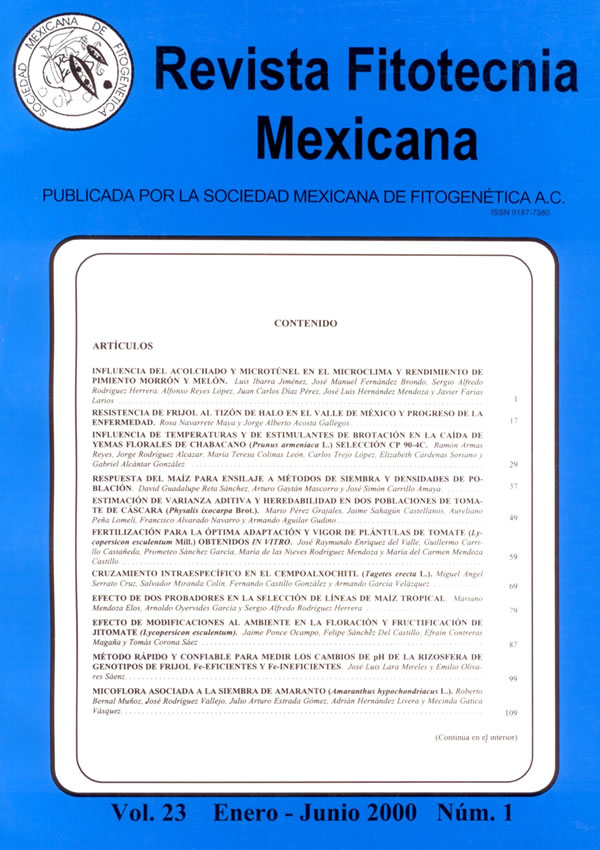FERTILIZATION FOR ACCLIMATIZATION OF TOMATO PLANTLETS (Lycopersicon esculentum Mill.) OBTAINED IN VITRO
Main Article Content
Abstract
In commercial production systems of tomato (Lycopersicon esculentum Mill.) it has been observed that suitable transplant fertilization improves its establishment rate and further development in the field as well as the yield and fruit quality. In order to use vitroplantlets in tomato production systems, which grow in a nutritive medium and high relative humidity, it is necessary to adjust them simultaneously to new nutritive conditions, photoperiod and a drier environment because the success of the vitroplantlet establishment depends on these factors. The purpose of this work was to study the effect of the fertilization of Lycopersicon esculentum cv. Daniela plantlets, obtained through organogenesis from leaf tissues. The plantlets of 3 cm stem length were transferred to a greenhouse and set in pots of 110 cm3 containing a 1:1 perlite-soil mixture. Since transplanting and during 25 days of acclimation period, the vitroplantlets were irrigated with the Steiner (1984) nutritive solution adjusted to the osmotic potential: A= 0, B= -0.018, C= -0.036, D= -0.054 and E= -0.072 Mpa. At the end of the period, 100 % of the vitroplantlets survived, even those irrigated with tap water (A). Unfertilized plants reached a stem length of 62.7 mm and a stem diameter of 2.8 mm, 16.2 cm2 of leaf area. 2.76 mg chlorophyll/ g leaf fresh weight, 200.3 mg shoot dry weight, 272.6 mg total dry weigth and 12.9 mg of total soluble carbohydrates in shoots. The shoots of plantlets fertilized with solution C were 25 % taller; with solutions D and E the stem diameter increased 7 %; when the solution E was applied, the plantlets increased their leaf area (175 %), shoot dry weight (66 %), total dry weigth (53 %) and chlorophyll content in leaves (4 %); plantlets irrigated with the solutions B, C, and D had 36, 45, and an additional 36%, respectively, of total soluble carbohydrates in shoots relative to unfertilized plantlets.

